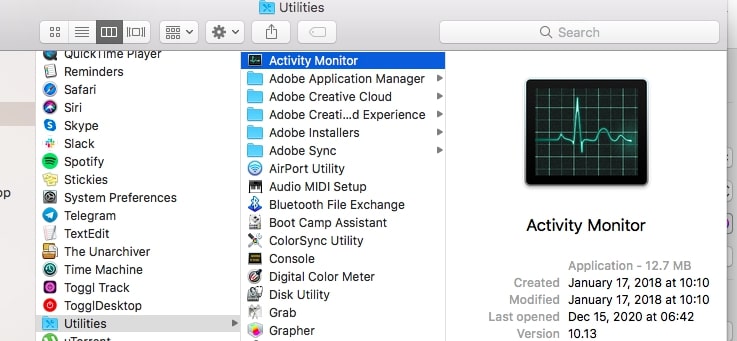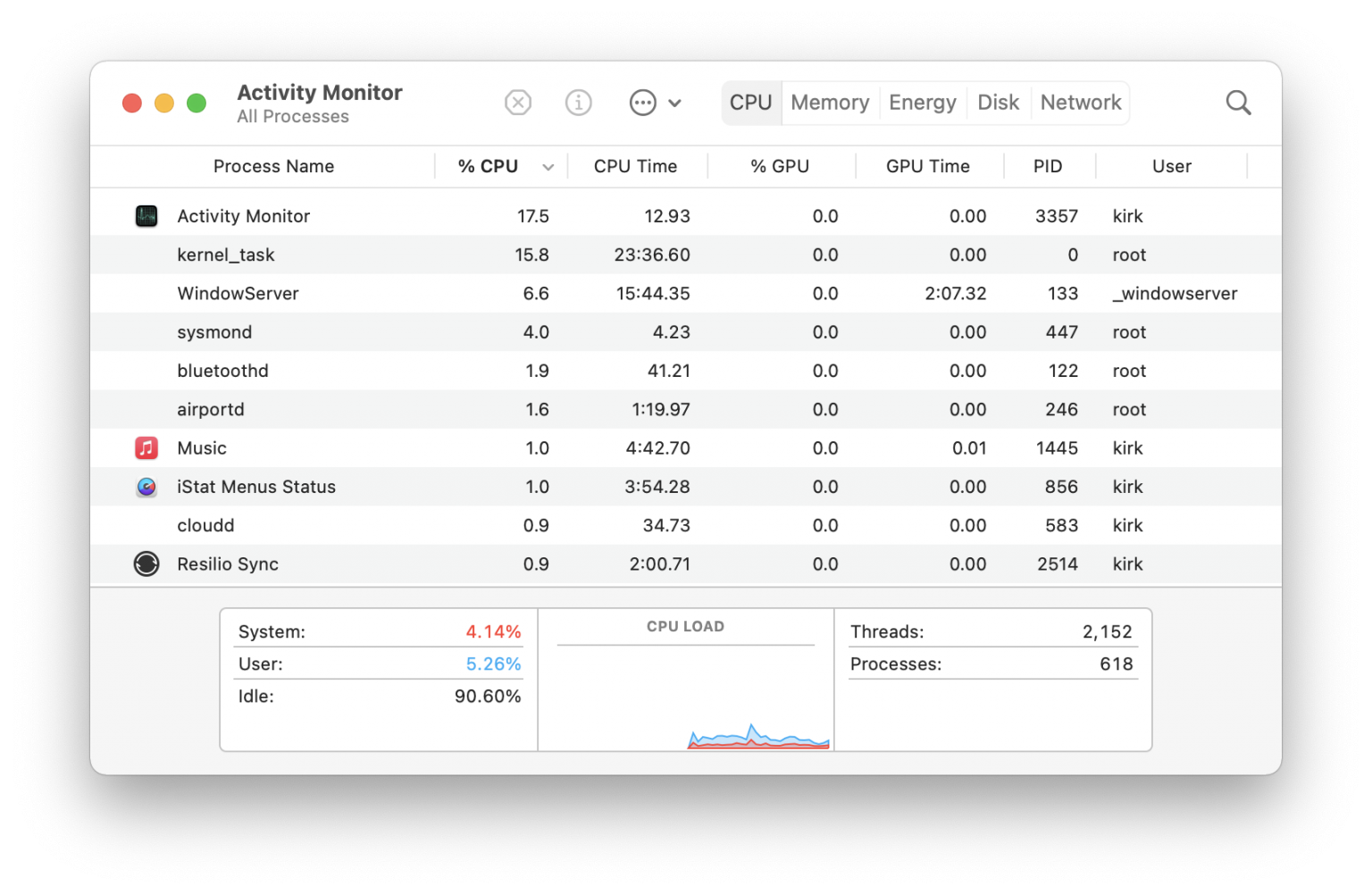

Select Quit (this is the same as choosing File -> Quit within an app) or Force Quit, which quits the process immediately.Make sure the app or process is highlighted, then click the Quit (X) button in the top-left corner of the Activity Monitor window.Note that an unresponsive process is labelled with (Not Responding).
/article-new/2020/05/2how-to-use-activity-monitor.jpg)
To make finding the culprit easier, click Process Name in the column header to sort them alphabetically, or use the Search field in the top-right corner of the window to find the app or process.

Note that the columns available to you will depend on whether you're using a desktop or a notebook Mac. To display more columns, select View -> Columns in the menu bar, then choose the columns you want to view. You can click the triangle next to an app's name to display all the child processes under the parent application. That's because you're seeing the list being updated every five seconds to show changes in individual app usage statistics. You'll notice the order jumps around a lot. The main window lists all the apps and processes currently running on your Mac. You can find the Activity Monitor on your Mac in the /Applications/Utilities folder.
#Activity monitor mac dock portable#
If you're on a portable Mac and you have suspicions that an app is sapping your battery, Activity Monitor can help you identify it. To declare an application to be a background application, use Xcode to open the application's bundle Info.With the Activity Monitor app in macOS, you can force quit misbehaving apps, find out how much energy your Mac is using, and see which apps or processes are eating the most processor cycles. You should also use this key if your application uses higher-level frameworks that connect to the window server, but are not intended to be visible to users.Īs background applications are never shown in the macOS menu bar, you should be launch/terminate the application with another GUI application. You can use this key to create faceless background applications. If background application key exists and is set to YES, Launch Services runs the application in the background only. set the UIElement property's value to True Ī background only application runs only in the background.add a property UIElement (or "Application is agent").To declare an application to be an agent application, use Xcode to open the application's bundle ist file: Similarly, the Dock and Login Window are also two applications that run as agents.

A click on a window belonging to an agent application brings that application forward to handle events.Īgents are often shown in the macOS menu bar, in which case the agent application should provide a StatusBar (TTrayIcon) user interface and hotkeys if it needs a menu-like user interface.įor example, startlazarus is an agent application, launched by the Lazarus IDE when rebuilt. Although they typically run as background applications, they can come to the foreground to present a user interface if desired. plist file, Launch Services runs the application as an agent. If the agent key exists and is set to YES in the application's. These two application categories and their attributes are explained below.Īgent applications do not appear in the Dock or in the Force Quit window but they are visible to utilities like Activity Monitor, Unix command-line tools (eg top), as well as macOS API functions. While there is no way to hide an application from the Dock at runtime, this can be done at design-time if the application declares itself to be an agent or a background application.


 0 kommentar(er)
0 kommentar(er)
